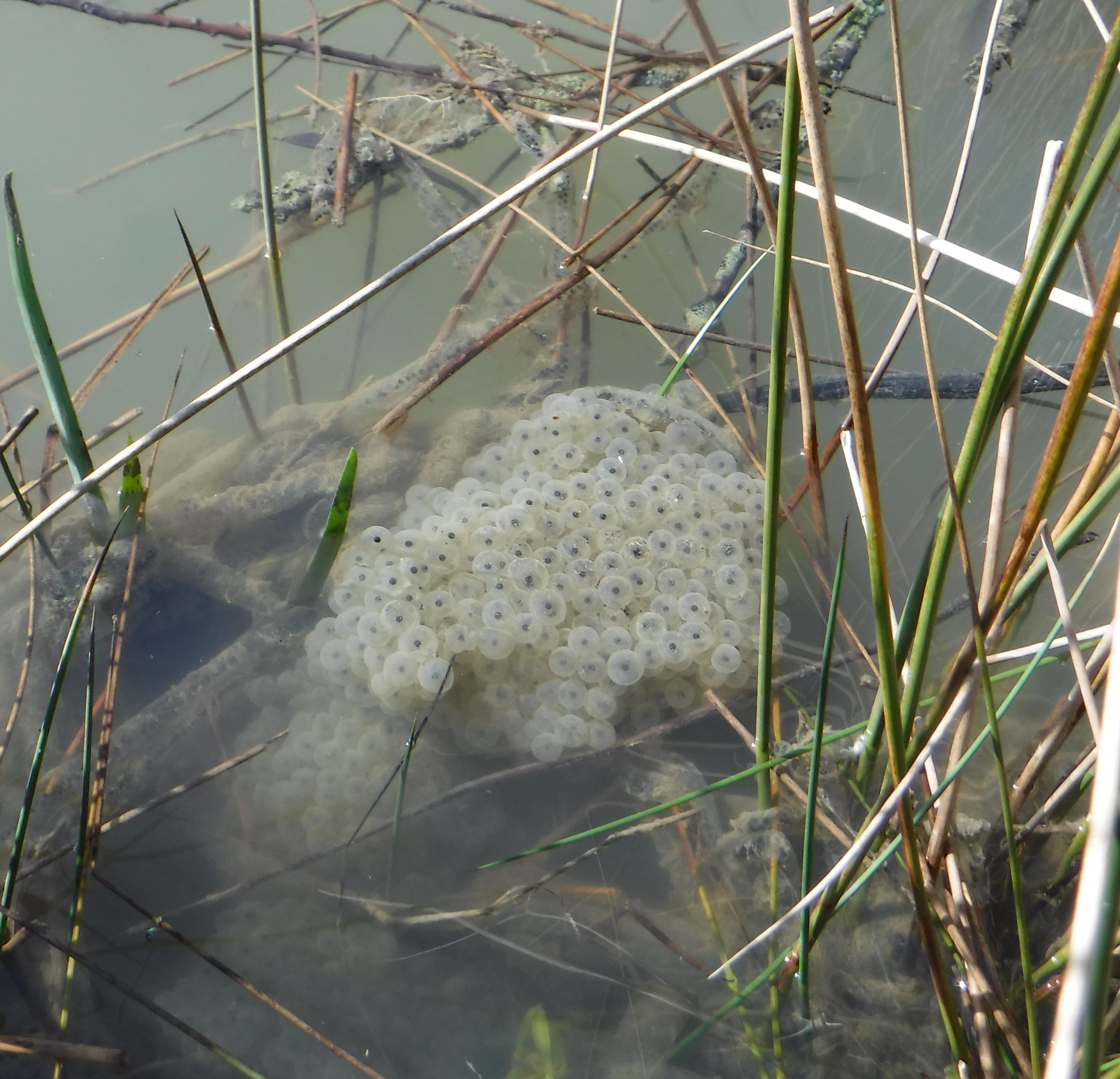
Total monthly rainfall: 74.5 millimetres. Maximum daily rainfall: 25.5mm (6th March).
Altogether there were 15 days with measurable rainfall, including 5 minutes of snow and 15 minutes of hail on the morning of the 29th. There were also 11 days with 100% cloud-cover for at least part of the day. Maximum temperature on the warmest day was 15°C on the 16th. Maximum temperature on the coldest days was 8°C on the 5th, 20th, and 29th. There were 7 days with a very strong wind-chill between the 20th and 28th.
It was a good month for the early blooming of wildflowers. The cuckoo flower first appeared around the lake the on March 13th, followed next day by the wood anemone in our deciduous woodland.
March 18th produced scarlet pimpernel near the garden pond and marsh marigold on and beside the water. The first flowering bluebells appeared in the wood on the 19th, while the greater stitchwort flowered in the ride on the 20th, the same day as the first snake’s head fritillary alongside another of our ponds. The last two wildflowers to appear this month were the wood violet in the ride, and periwinkle beside our verge-side front hedge on the 24th. The 9 wildflowers seen this month bring our total to 19 species for the year so far.
-
 First bluebell
First bluebell
First bluebell
First bluebell
-
 First periwinkle
First periwinkle
First periwinkle
First periwinkle
-
 First snake's head fritillary
First snake's head fritillary
First snake's head fritillary
First snake's head fritillary
-
 Frogs spawn
Frogs spawn
Frogs spawn
Frogs spawn
https://www.kentfieldclub.org.uk/news/little-barton-farm-wildlife-notes/nature-notes-march-2020#sigProId5249470082
Five more wild bird species this month brought our total to 40 so far. Three long-tailed tits appeared on a feeder in the garden on March 3rd. A buzzard circled high above our wood on the 6th, and a bullfinch settled on an apple tree In the garden on 14th. Next day a sparrow hawk took a pigeon, and on the 18th we heard some early chiff-chaffs in the woodland tree-tops.
Cooler weather with strong northerly winds did not produce the butterflies and moths the wildflowers needed, but we did spot a peacock butterfly on the 4th (9°C), a red admiral on the 8th (9°C), and a comma on the 23rd (11°C). Other insects, especially bumblebees, fared better. There was a huge number of buff-tailed bumblebees, plus a first-sighting of the red-tailed bumblebee on the 19th, white-tailed bumblebee (22nd), and a bee-lookalike called a bee-fly (also on the 22nd (among celandine). A seven-spot ladybird was found on a fence-post among woodland brambles on the 2nd, and our regular checks on the hibernating 16-spot ladybirds produced the following observations:
March 6th – 180 ladybirds left on 6 double-fence posts; 9th March – 150 ladybirds remain; 10th March – 100 ladybirds on 4 double-fence posts; 29th March – about 80 ladybirds left; March 31st – about 50 remain, all about the same size they were at the beginning of the month.
Tree and shrub development from winter into spring was as follows:
March 3rd – blackthorn blossom started to appear. March 15th – Silver birch and wild cherry buds began to open. March 17th – Silver birch and hornbeam began producing small leaves. March 21st – Field maple buds began to open. March 24th - Wild cherry blossom began. March 25th- Field maple first leaves appeared. March 28th – Horse chestnut buds began opening.
Finally, on March 16th, the first frogs began spawning in considerable numbers, and a small number of toads did so on March 26th.

